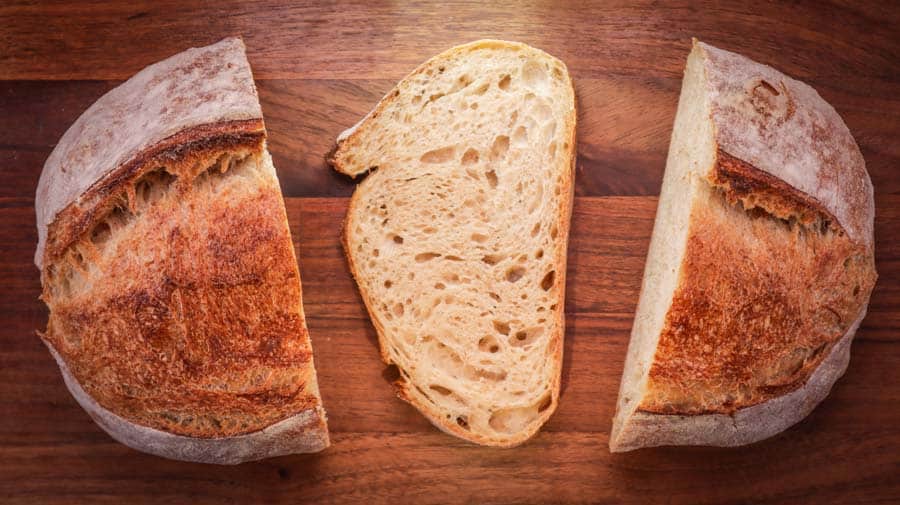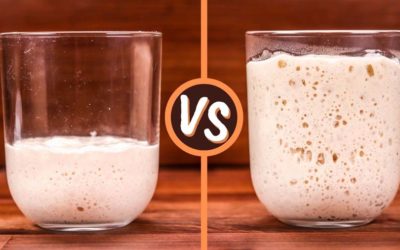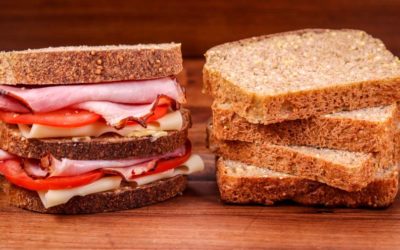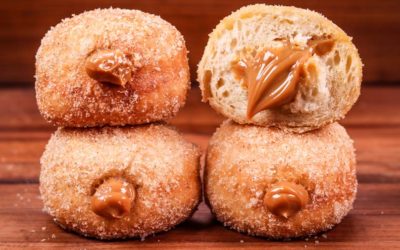There are so many no-knead bread recipes out there, but I will show you have to do it effectively with minimal effort and a great result. This is basically fool proof as long as your starter is nice and active.
If you do not have a starter or would like to learn more about keeping your starter active, then check out the sourdough bread page where I have plenty of videos in which I explain everything is detail.
Your starter is the foundation of every bake. Everything relies on it. Make sure you use good water when feeding and making your dough. Use good salt without additives and good unbleached flour. Feed your starter regularly and know exactly how long it takes to rise at a certain feeding ratio. Once you have this kind of relationship you will be able to bake any bread.
With that out of the way let us talk about this bread. I do not make no-knead bread very often. But when I do, I am always surprised how good result can be without adding the effort and messiness of kneading. The strength that can be built up in the dough by simply performing a few folds and a nice tight shaping is amazing. You would never know that this was not kneaded.
At 70% hydration, this dough is a little sticky, but still easy to handle and because of the water content we get nice bubbles in the crumb and a beautiful texture.
Good quality water is super important for your starter. I would suggest using bottled water or filtered water. Another great way to neutralize the chlorine in tap water is by pouring it into a jar and leaving it uncovered for 24 hours.
Make sure to watch my hands to see how I handle the dough to make it nice and tight.
Watch the video down below for detailed instructions.
Ingredients
For the leaven –
50g (1.75oz) strong white bread flour
50g (1.75oz) room temperature water if your kitchen is around 20-22C (68-71F)
10g (0.35oz) active sourdough starter
*This is a 1:5:5 ratio and I know that my leaven will be ready in 10-12 hours. Keep in mind that every starter is different and yours may be more or less active than mine.
For the dough –
240g (8.5oz) strong white bread flour
50g (1.75oz) wholemeal flour
7g (0.25oz) sea salt
190g (6.7oz) water at around 26C (F) if your kitchen is around 20-22C (68-71F). This is quite a high temperature, but it is appropriate as we are not kneading this dough. The final dough temperature will in fact be lower because my flour is cooler.
*To learn more about dough temperature control click here.
Method
- Make the leaven. Mix the flour, starter, and water. Stir well. Cover and leave to ferment for around 10-12 hours or until doubled in volume and bubbly.
- In a bowl add the remaining water and salt. Stir to dissolve the salt. As we are not kneading, we need to make sure that all the ingredients are dispersed evenly throughout the dough as we mix them.
- Add the leaven and wholemeal flour. Mix well once again. Add the remaining white flour. Mix this to a dough. Use your hands to mix it all well together.
- Scrape the dough together, shape into a ball. *Desired dough temperature 25C (77F). If your dough is warmer, then it will ferment more rapidly. If it is cooler, then it will take longer. Adjust proofing time accordingly.
- Cover & rest for 20 minutes.
- Fold #1.
- Rest for 20 minutes.
- Fold #2.
- Rest for 20 minutes.
- Final fold.
- Ferment for 3 hours or until almost doubled in volume.
- Do a light pre-shape.
- Rest the dough for 30 minutes.
- Shape it tight using the stitching method. Place the loaf in a floured breadbasket.
- Final proof 1.5 hours. During this time preheat your oven and baking vessel to 240C (F) fan off.
- Place the loaf on your preheated pan and score it with a razor or a sharp knife.
- Bake for 20 minutes with the lid on.
- Remove the lid and bake for 15 minutes.
Let it cool down and enjoy!
Keep in mind that the conditions in each kitchen are different, so fermentation times may vary for you. It is up to the baker to control the bread and react accordingly.
Your oven may be different too, so your baking time may vary.
Watch the video here



